May 2022
The first possible case of Mpox is investigated in New York City at Bellevue Hospital.
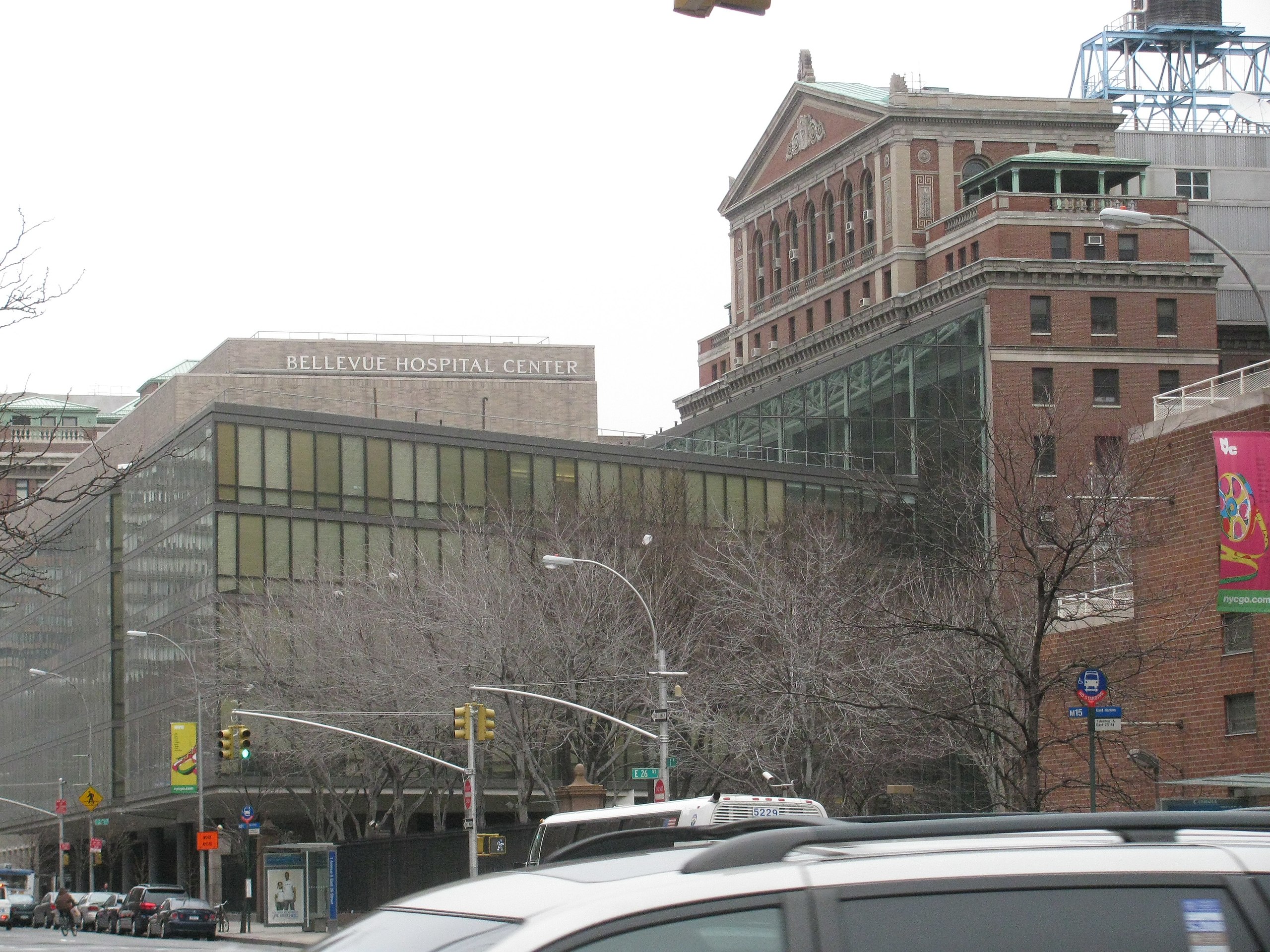 Image via Wikipedia.
Image via Wikipedia.
In 2022, as the COVID-19 pandemic lingered but society largely abandoned safety measures, fear about a new pandemic – Mpox (formerly referred to as monkeypox) – began to bubble up in the United States. Like HIV, this Mpox outbreak was largely associated with gay and queer communities. Unlike HIV, Mpox was not a newly emergent outbreak but one which “has been well-described since the 1970s in Central and West Africa” (Gonsalves, Mayer, and Beyrer 2022).
In November 2022, New York city wound down its mobile and mass vaccination sites, and on February 1, 2023, the city declared an end to the monkeypox outbreak. But what if the outbreak had not been contained? We can learn from the history of pandemics and quarantine measures to predict the kind of future we might have seen – and it might be surprising how many seemingly extreme or dystopian measures actually have a historical or modern precedent.
Some research used for this project was completed previous for a research paper, “COVID-19, HIV/AIDS, and the Formation of Sacrifice Zones and Queer Counterpublics,” which I completed in December 2022 for ARCH-880N-01: Security, Space, and Power at Pratt Institute.
The first possible case of Mpox is investigated in New York City at Bellevue Hospital.
 Image via Wikipedia.
Image via Wikipedia.
A temporary clinic is opened to administer the two-dose JYNNEOS™ vaccine for Mpox to people who may have been exposed, with eligibility restricted to “all gay, bisexual, and other men who have sex with men (cisgender or transgender) ages 18 and older who have had multiple or anonymous sex partners in the last 14 days.”
A second wave of JYNNEOS™ vaccines is announced, with eligibility expanded to include “Gay, bisexual, or other men who have sex with men and transgender, gender non-conforming, or gender non-binary persons ages 18 and older who have had multiple or anonymous sex partners in the last 14 days.”
New York City adopts an intradermal vaccination strategy as mandated by the federal government, which “can yield roughly four to five times the number of doses per vial than the subcutaneous method of administration, and deliver the same immune response.”
As the intradermal vaccine, which can leave a mark on the patient’s forearm, rolls out, many queer venues begin implementing a scar check in addition to checking a vaccination record at the door to ensure visitors have been vaccinated.
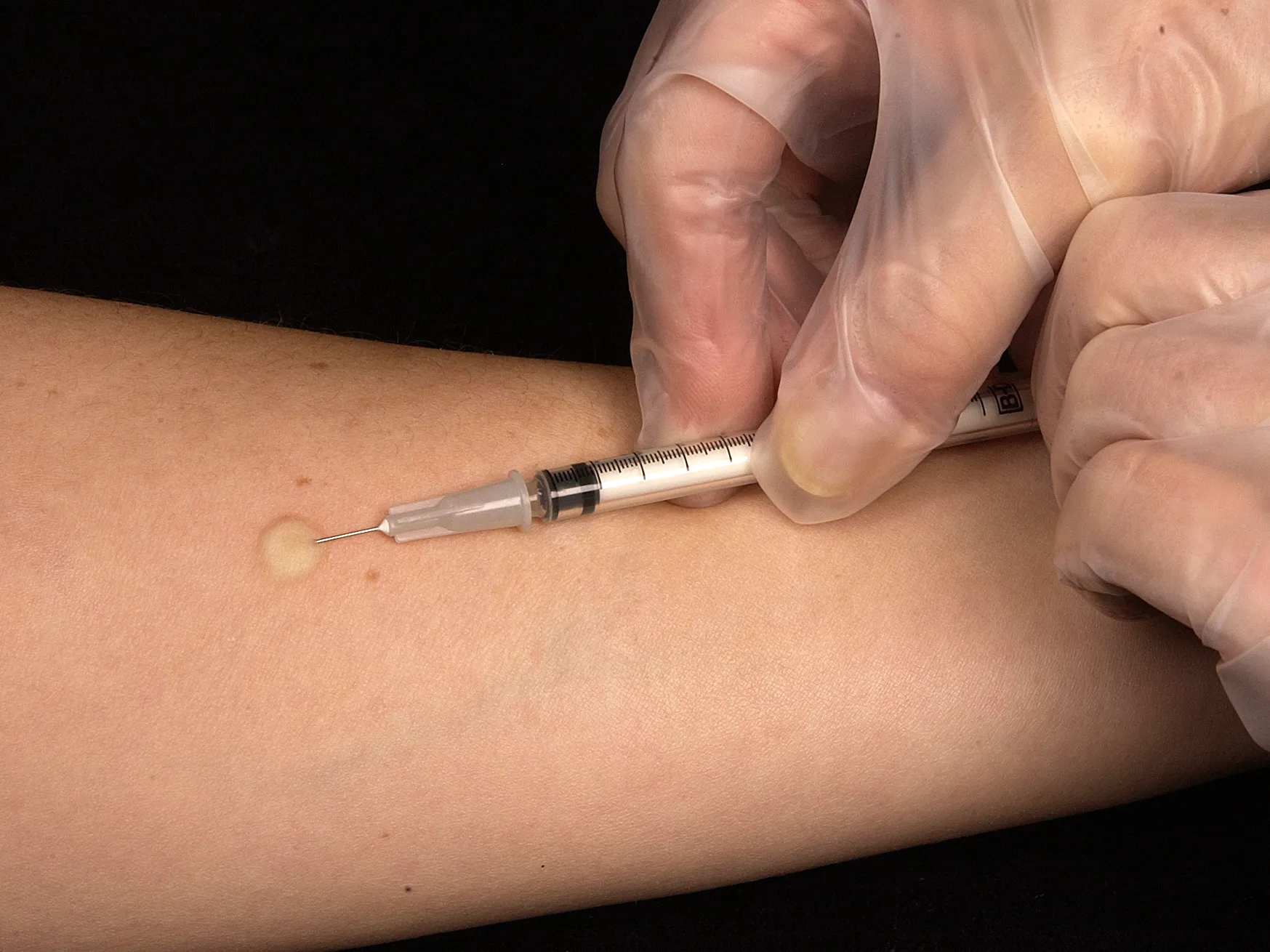 Image via the CDC via Self.
Image via the CDC via Self.
Amidst increasing popularity of vaccination scar checks, fake news skepticism begins to arise about the Mpox vaccine. One highly publicized case of negative side effects, alongside a wave of anti-trans legislation, begins to evoke fear that the government is trying to poison or sacrifice queer communities through their response to Mpox.
With skepticism about the available vaccines taking a stronghold, cases begin to escalate. Simultaneously, restrictive measures increase in an effort to counter the increase in cases.
The federal government enlists Clearview AI, known for their facial recognition technology, to fast track vaccination scar recognition technology. New York state quickly implements this technology in airports and public spaces such as public transit.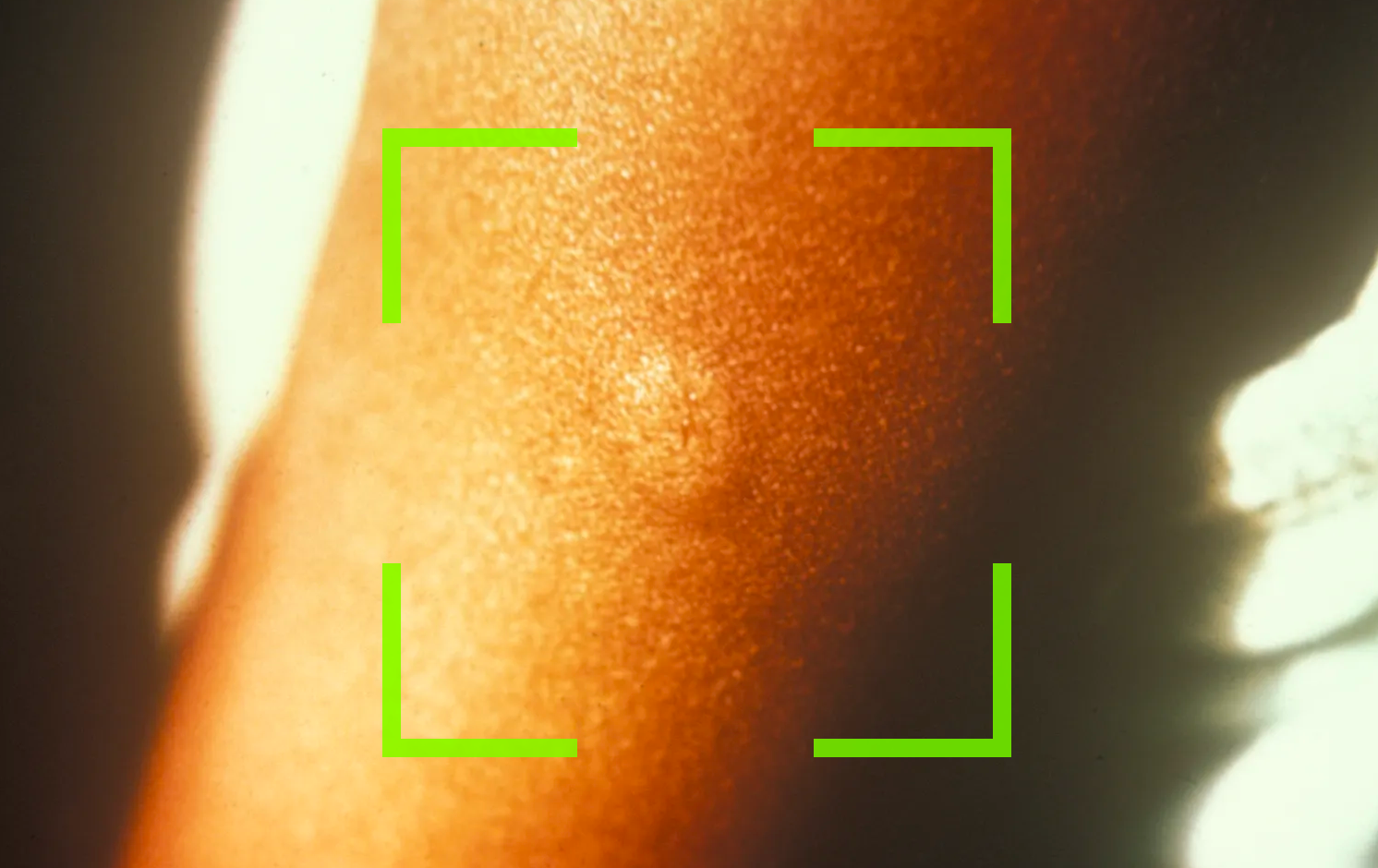 Original image via the CDC via Self.
Original image via the CDC via Self.
Clearview's vaccination scar recognition software and scanning stations are offered for a small monthly fee to private spaces such as museums, malls, and entertainment venues.
Some have expressed concerns about what impact these surveillance systems will have after the crisis: "While the ability to use location-based data is not itself new, its use during a pandemic offers an opportunity in which the public both becomes more aware of the use of these data and begins to normalize its use due to the extraordinary circumstances" (Sylvia 2020, 2).
Cases continue to ebb and flow, although strict surveillance measures help quell some of the growth in cases. James Calhoun, an Instagram influencer from a wealthy family, contracts Mpox.
Calhoun takes to Instagram to place blame on an anonymous sex encounter he had at a gay club, and takes the case to court, feeling he was deceived by someone who may have been infected in what he assumed was a protected space. The government turns to the vaccination scar records from the club’s door.
 Image generated using Craiyon.
Image generated using Craiyon.
In the records from the weekend when Calhoun believes he contracted Mpox, the club finds a record of one man, Bronte Ross, who was admitted despite his scar not registering on the scar recognition system. The door person from the club testified, “I’ve noticed that the system often does not recognize scars on darker skin such as Black and Latino patrons, and that many darker skinned people chose the subcutaneous vaccine because of increased likelihood of developing a keloid scar from the intradermal route. So sometimes I check the email record for those patrons instead.”
Although Ross is able to produce a record of his vaccine, he is still found guilty after months of legal battles, and sentenced to life in prison.
With increasingly draconian measures and quelling of vaccine misinformation, cases seemed to flatten for several years, but begin to escalate again in 2030 after some strains of Mpox develop resistance to vaccines.
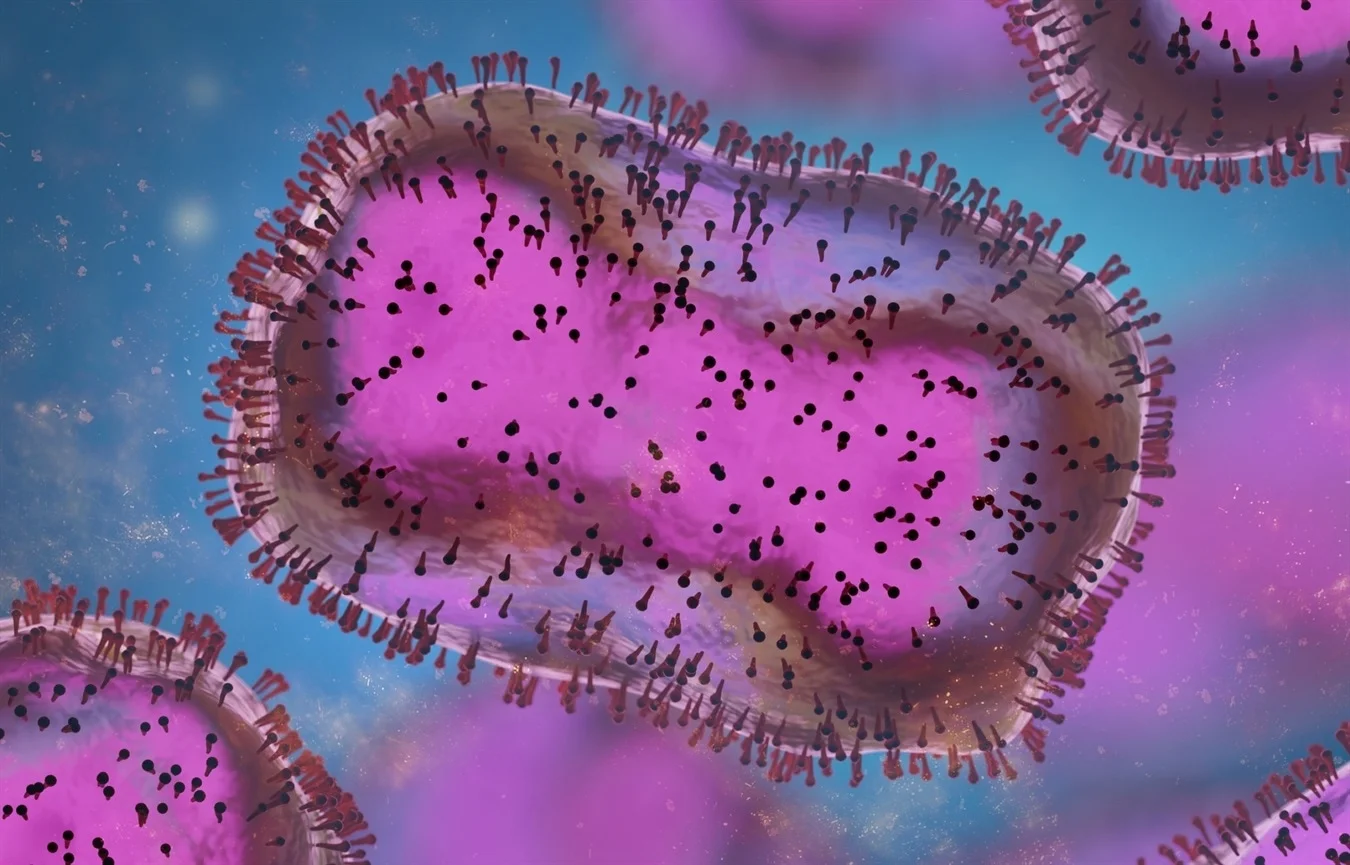 Image via Dotted Yeti / Shutterstock.
Image via Dotted Yeti / Shutterstock.
Although people outside the queer community have contracted Mpox, the initial association proves difficult to shake. As cases continue to rise, precautionary quarantine measures for those caught participating in activities adjacent to queer culture are taken in some states. Eventually, New York gives into pressure to implement these measures in relation to the Mpox outbreak. Certain hotels throughout the city are taken over and used as quarantine zones.
An executive order declares a state of emergency that allows for a great deal of wiggle room in what can lead to a period of quarantine. Activities ranging from participation in certain academic circles to nightclubbing can lead to a quarantine.
Despite efforts to contain Mpox, the epidemic has now continued in waves for decades. Some suggest that this is because the government has failed to act on Mpox in communities that don’t identify as queer, while sending queer communities into quarantine zones.
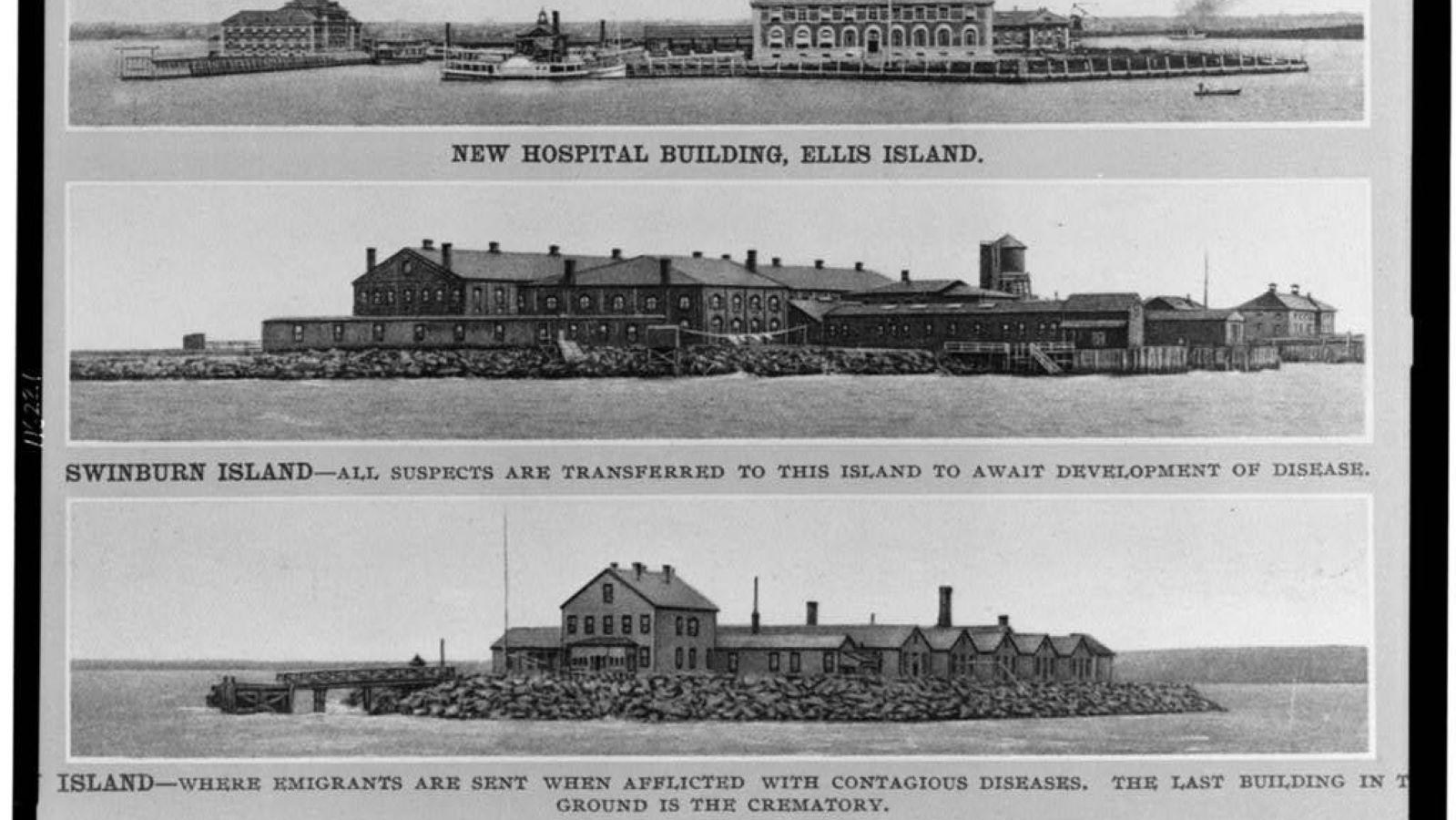 Image via National Park Service.
Image via National Park Service.
Instead of expanding or re-evaluating its response, the federal government doubles down on quarantine measures. NYC follows suit. With existing quarantine sites reaching capacity, the city government revisits previously abandoned Hoffman and Swinburne islands (artificially created islands built in the 1870s as quarantine centers) to build new quarantine centers.
Island residents have also sometimes isolated from the outside world to avoid the risk of infection. During COVID-19, Dare County, NC announced it was cutting itself off from the outside world, and residents of Vinalven off the coast of Maine during COVID-19 defended their island from summer visitors (Twilley and Manaugh 2021, chap. 1).
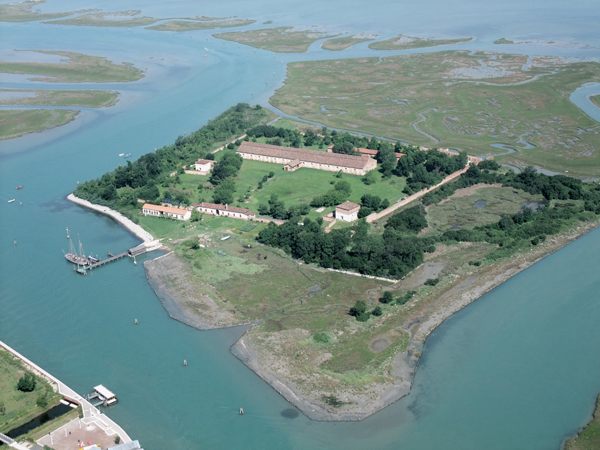 Lazaretto Nuovo in Venice. Image via Atlas Obscura.
Lazaretto Nuovo in Venice. Image via Atlas Obscura.
Wealthier segments of the population, unwilling to spend time on the ramshackle state quarantine island facilities, begin developing luxury solutions for quarantine after exposure. Fire Island, an island off the coast of New York that was previously a gay tourist destination, pivots to become part of the luxury quarantine industry.
Those who test positive for Mpox can pay thousands of dollars for a six-week stay on the island, with a private room, meal service, and scheduled social events. Some Airbnb hosts on the island jack up their prices and join in on the profits.
Some people quarantined on Hoffman and Swinburne Islands have been detained there indefinitely. Unrest brews among the detainees on Hoffman Island, and they begin to plot a rebellion. The island is understaffed, oversight is minimal, and detainees have free reign to wander the islands. A former engineer, Marcella Sharp, takes the lead on the plan to build small boats from materials available on the island and slowly send those who have been there longest back to the city.
 Image via Wikimedia Commons.
Image via Wikimedia Commons.
After her own return to the city, Marcella Sharp founds an underground organization, with the tongue-in-cheek name Hoffman Alumni Organization, that initially focuses on helping create false identities for those who escaped from Hoffman Island so they cannot be tracked after their escape. The organization expands operations to slowly free detainees from Swinburne Island.
 Marcella Sharp. Image generated with Picrew.
Marcella Sharp. Image generated with Picrew.
Eventually, the organization expands to distribute vaccines, medication, and other information to the queer community. The group primarily organizes and meets in the basement of a former lesbian nightclub, whose doors have shuttered alongside the closing of many queer spaces during the Mpox epidemic.
Marcella Sharp passes away, but the Hoffman Alumni Organization lives on. The Mpox epidemic has largely been eradicated thanks to improved information and resources that trickled out from the organization, similar organizations that formed over the coming years, and its influence on government policies. Sharp’s book, Islands of Ourselves, rises to the top of the bestseller list after her death and continues to inspire activists. A unofficial queer march spontaneously takes place after her funeral, including the fluid, redesigned rainbow flags she helped spearhead.
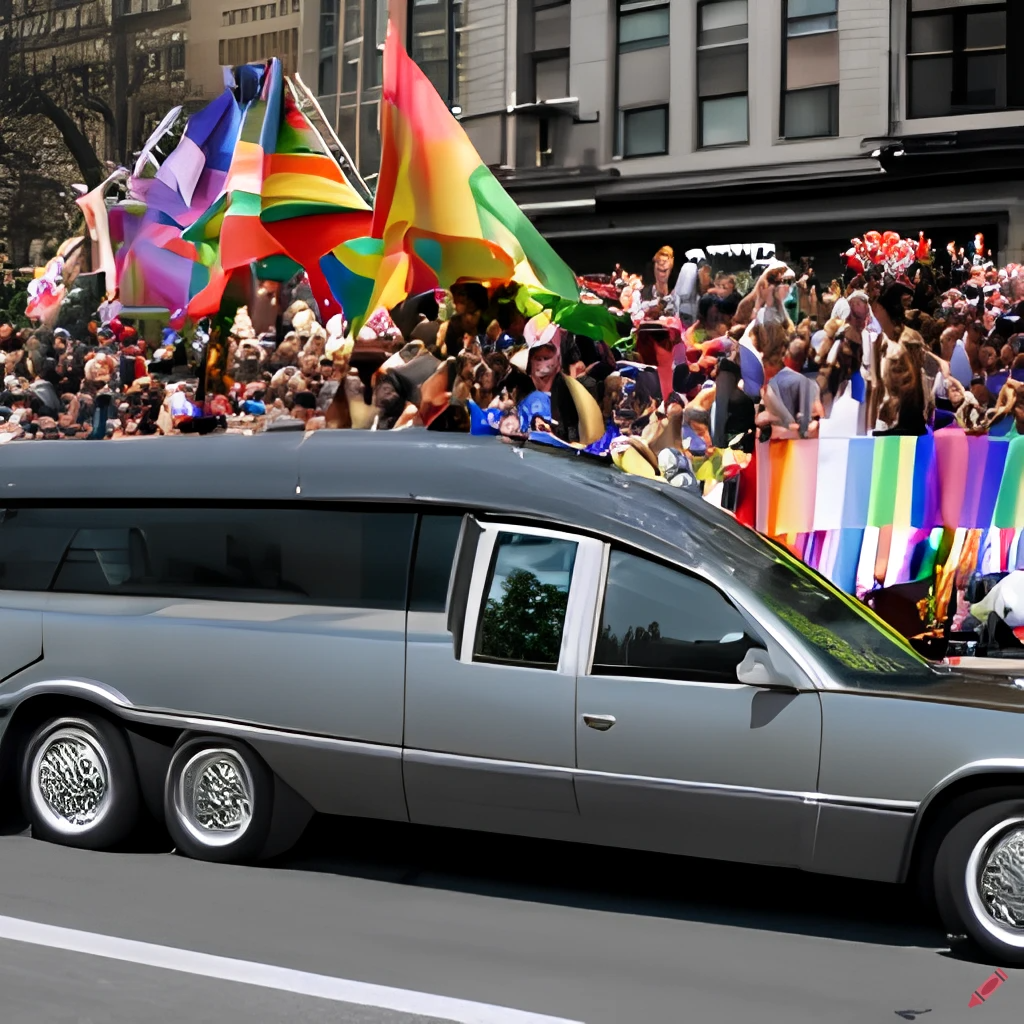 Image generated using Craiyon.
Image generated using Craiyon.
Over 40 years later, many who escaped the islands still live under the false identities they assumed, fearing repercussions if their real identities are discovered. Although the epidemic has largely been quelled, stigma remains, both around those who once contracted the illness and the populations that were associated with it.
BBC News. n.d. “Russia Uses Facial Recognition to Tackle Virus.” Accessed December 5, 2022. https://www.bbc.com/news/av/world-europe-52157131.
“City to Adopt New Intradermal Monkeypox Vaccination Strategy to Reach More New Yorkers - NYC Health.” n.d. Accessed March 6, 2023. https://www.nyc.gov/site/doh/about/press/pr2022/new-intradermal-monkeypox-vaccination-strategy-to-reach-more-newyorkers.page.
Gleason, Will. 2020. “Treat Yourself to a Luxury Quarantine at This Brooklyn Hotel.” Time Out New York. August 5, 2020. https://www.timeout.com/newyork/news/treat-yourself-to-a-luxury-quarantine-at-this-brooklyn-hotel-080520.
Gonsalves, Gregg S., Kenneth Mayer, and Chris Beyrer. 2022. “Déjà vu All Over Again? Emergent Monkeypox, Delayed Responses, and Stigmatized Populations.” Journal of Urban Health 99 (4): 603–6. https://doi.org/10.1007/s11524-022-00671-1.
“Health Department Announces Next Phase of Monkeypox Vaccine Strategy – NYC Health.” n.d. Accessed March 6, 2023. https://www.nyc.gov/site/doh/about/press/pr2022/health-department-announces-next-phase-of-monkeypox-vaccine-strategy.page.
“How Taiwan Is Tracking 55,000 People under Home Quarantine in Real Time.” 2020. Quartz. April 1, 2020. https://qz.com/1825997/taiwan-phone-tracking-system-monitors-55000-under-coronavirus-quarantine/.
“Monkeypox Vaccine Clinic for People Who May Have Been Exposed to Monkeypox - NYC Health.” n.d. Accessed March 6, 2023. https://www.nyc.gov/site/doh/about/press/pr2022/monkeypox-vaccine-clinic.page.
Munuera, Ivan L. 2020. “HIV and AIDS Kin: The Discotecture of Paradise Garage.” Thresholds, no. 48 (April): 133–47. https://doi.org/10.1162/thld_a_00717.
Nast, Condé. 2023. “Everything That Happened in Anti-Trans Legislation This Week.” Them. February 17, 2023. https://www.them.us/story/anti-trans-legislation-this-week-february-17-2023.
“New York City Declares End to Mpox Outbreak After Nation-Leading Response - NYC Health.” 2023. February 1, 2023. https://www.nyc.gov/site/doh/about/press/pr2023/nyc-declares-end-to-mpox-outbreak.page.
Otterman, Sharon. 2022. “Last Call for the Monkeypox Vaccine Van.” The New York Times, November 17, 2022, sec. New York. https://www.nytimes.com/2022/11/17/nyregion/monkeypox-vaccine-van-nyc.html.
“Police Deploy ‘Pandemic Drone’ to Detect Fevers and Enforce Social Distancing.” 2020. Gizmodo. April 23, 2020. https://gizmodo.com/police-deploy-pandemic-drone-to-detect-fevers-and-enfor-1843017443.
“Possible Monkeypox Case in New York City - NYC Health.” n.d. Accessed March 6, 2023. https://www.nyc.gov/site/doh/about/press/pr2022/monkeypox-possible-nyc-case.page.
Rueb, Emily S. 2019. “He Emerged From Prison a Potent Symbol of H.I.V. Criminalization.” The New York Times, July 14, 2019, sec. U.S. https://www.nytimes.com/2019/07/14/us/michael-johnson-hiv-prison.html.
Sylvia, J.J. 2020. “The Biopolitics of Social Distancing.” Social Media + Society 6 (3): 2056305120947661. https://doi.org/10.1177/2056305120947661.
Thrasher, Steven W. 2022. The Viral Underclass. Epub. Celadon Books. https://us.macmillan.com/books/9781250796639/theviralunderclass.
Twilley, Nicola, and Geoff Manaugh. 2021. Until Proven Safe: The History and Future of Quarantine. Ebook. Farrar, Straus and Giroux. https://www.kobo.com/us/en/ebook/until-proven-safe.